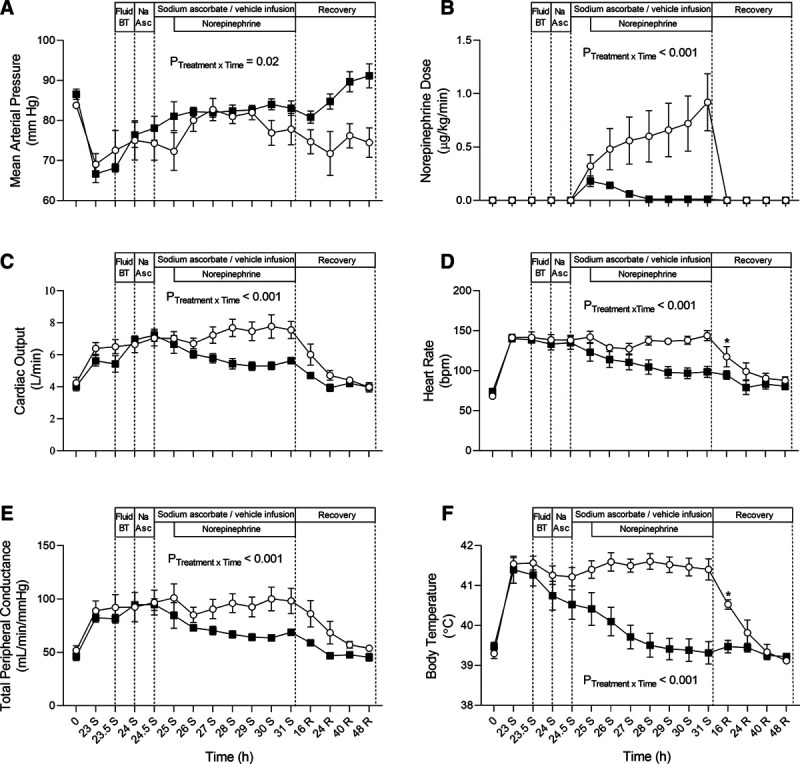Figure 1.

Changes in systemic hemodynamics in response to sodium ascorbate (Na Asc) (closed squares, n = 5) or vehicle (open circles, n = 5) treatment during ovine sepsis and during recovery from Gram-negative infection. Mean arterial pressure (A), norepinephrine dose (B), cardiac output (C), heart rate (D), total peripheral conductance, and core temperature (F) during infusion of Escherichia coli from 0 to 31 hr of sepsis and then recovery over 48 hr following antibiotic therapy. All animals were initially resuscitated with fluid bolus therapy (fluid BT, 30-mL/kg balanced crystalloid over 30 min) from 23.5 to 24 hr of sepsis. Animals were randomized to receive Na Asc (0.5 g/kg) or vehicle, crystalloid BT, from 24 to 24.5 hr of sepsis followed by an infusion of sodium ascorbate (0.5 g/kg/hr) or vehicle crystalloid from 24.5 to 31 hr of sepsis. Norepinephrine doses were titrated to maintain mean arterial pressure at baseline levels (75–80 mm Hg) from 25 to 31 hr of sepsis. All animals received IV antibiotics at 31 hr of sepsis (1-g ceftriaxone), with a repeated dose at 24 hr, and their recovery from infection was monitored over 48 hr. Time 0 is the mean of the 24th hr of baseline and times 23–31 hr of sepsis and 48 hr of recovery are means of 0.5-hr periods. Data are presented as treatment group-specific mean ± sd. p values represent treatment-time interactions from a two-way repeated measures analysis of variance from 23 to 31 hr of Gram-negative sepsis. Following antibiotic therapy and cessation of Escherichia coli infusion, significant differences between the baseline (time 0) time point and the 16-, 24-, 40-, and 48-hr time points are indicated by *p < 0.05 in the vehicle treatment group. p values represent the results of a Dunnett test using absolute values.
